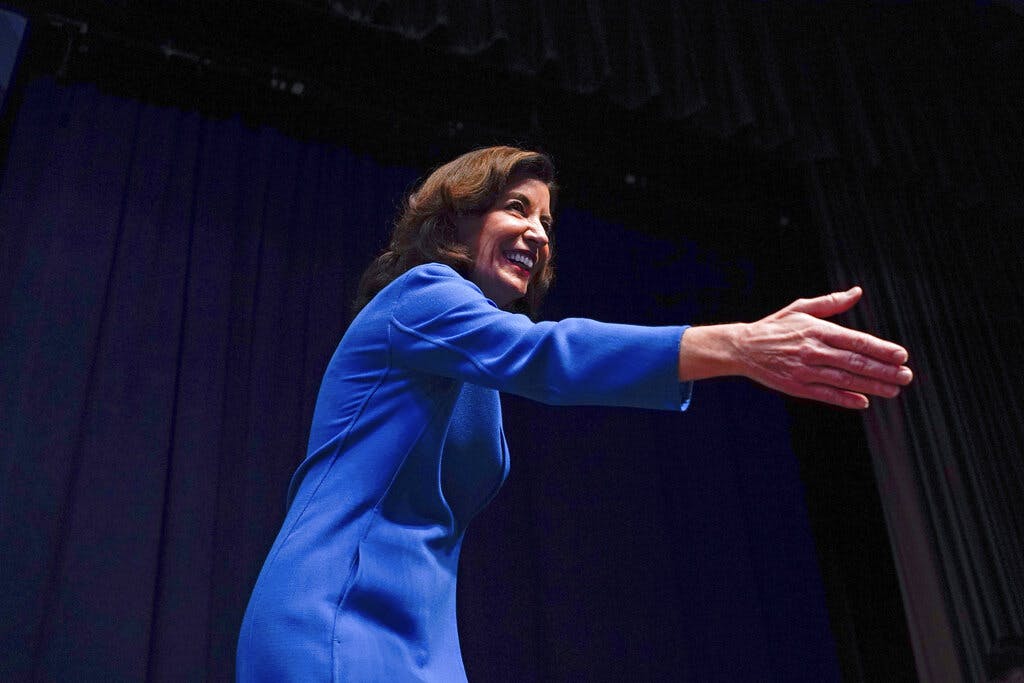Republicans’ Redistricting Suit May Turn Into Indictment of Simulation Analysis
A new type of algorithm-based evidence will influence the legal battle over New York’s new congressional district maps. Those familiar with the technology question its relevance to the case.

The legal battle over New York State’s congressional redistricting map begins tomorrow in state court. At a hearing, Republicans will press their lawsuit’s claim that the new districts were designed to remove four of their eight seats in Congress.
In a twist, Democrats — who drew the boundaries — will argue that what they created actually favors Republicans.
At court, Republicans will present a novel type of evidence: simulation analysis. Democrats plan to do the same in support of their own point.
Dissonance between these analyses points toward larger issues with the use of simulation-based evidence — including the control that so-called simulation analysts have over results and the relevance to the law.
The Republican lawsuit was filed shortly after Governor Hochul signed off on New York’s new district map, which created 20 Democratic-leaning seats, four Republican-leaning seats, and two highly competitive seats for the state’s U.S. House delegation.
If put into place, political analysts say, Republicans will likely lose two seats while Democrats will gain three, as the map removes one competitive seat.
“For all of their phony protestations about transparency and fairness in elections, what they’re doing is textbook filthy, partisan gerrymandering,” the head of the state’s Republican Party, Nick Langworthy, said after the lawsuit was filed.
They are “trying to win in a smoke-filled room rather than at the ballot box,” he said.
To prove that the map was unfairly advantageous to Democrats, Republicans brought in a senior analyst at RealClearPolitics, Sean Trende, to provide a relatively new sort of evidence called “simulation analysis.”
Simulation analysis is a technique where an algorithm draws thousands of maps according to certain redistricting criteria, generating a bell curve of possible outcomes. The analyst then compares the map in question against the bell curve to analyze possible biases.
“The Enacted Congressional Map was clearly drawn to discourage competition and for the purpose of favoring the Democratic Party and disfavoring the Republican Party,” Mr. Trende wrote in his analysis.
“This is the DNA of a gerrymander: mapmakers pack votes from one party into as few districts as possible, and then spread the remainder of these voters over as many districts as possible to reduce their political effectiveness,” Mr. Trende said.
In response, Democrats brought in their own analyst, a political science professor at Brigham Young University, Michael Jay Barber, to comment on Mr. Trende’s analysis and give his own.
Mr. Trende’s analysis “can tell us literally nothing about the direction or party that is benefitted” under the Democrats’ plan, Mr. Barber wrote. He added that in his view, the “plan generates fewer Democratic-leaning districts than the typical simulation.”
While it appears that Democrats have turned the tables on Republicans by using their own evidence against them, the disagreement also demonstrates the general problems associated with using this sort of so-called expert testimony as evidence in trials.
For one, the person designing the simulations has a great deal of control over what sorts of maps the simulation will create.
“Certainly, what you put in in terms of telling a computer to do something will have an impact on what is produced,” a politics and history professor at Catawba College, J. Michael Bitzer, told The New York Sun.
In other words, even two analysts with the best intentions could come up with different results in their analyses.
“I wouldn’t come out siding with either one — it shows the problems with using simulation analysis,” Corwin Smidt of Michigan State University told the Sun. “This shows the problems of using simulations. There’s no clear application of what the law says in running these simulations.”
Mr. Corwin examined the analyses of Messrs. Trende and Barber, and found them both to be legitimate, good-faith efforts. He noted that their disagreeing conclusions point to issues with the technique itself.
“In some cases the simulation approach doesn’t really get at the issue,” Mr. Corwin said. “It shows the ambiguities in the law.”
In short, legal requirements are not easily translated into algorithms.
In the telling of these academics, the computer analyses merely reflect the impulse to quantify the qualitative questions of politics.
“It’s certainly captured the quantitative dynamic of trying to answer the question: When is partisanship too much?” Mr. Bitzer told the Sun.
Now the courts will weigh the strengths and weaknesses of these algorithmic exhibits, as this type of evidence is quickly becoming popular.
Simulation analysis has already been used in cases in Kentucky, Ohio, Maryland, Pennsylvania, and North Carolina.
In the New York case, a state supreme court judge, Patrick F. Mcallister, will weigh the relevance of these analyses. Those interested may conduct their own simulation analyses on a site operated by the Campaign Legal Center, a nonpartisan advocacy group.

